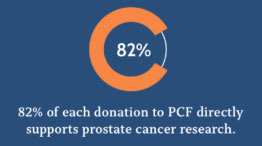For the majority of men, prostate cancer is treatable and curable and does not come back after initial treatment. However, about 25%–33% of men with prostate cancer will experience a recurrence of their cancer after surgery or radiation. Some of these men can still be cured with additional treatment, but some men develop a form of prostate cancer that, while not curable, remains TREATABLE for a very long time.
Below is a list of questions to ask when your PSA is rising after initial treatment.
- What does it mean that my PSA level is rising?
- What is my PSA level now, and how will we monitor changes over time?
- Can we (should we) chart the velocity or doubling time of my PSA? What can this tell us about my prognosis?
- Am I a candidate for local “salvage” prostatectomy or radiation? Why or why not?
- Should I get an imaging scan to see if the cancer has spread to my bones or other organs?
- If you recommend that I initiate androgen deprivation therapy (“hormone therapy”), how will this benefit me and slow down the growth of the cancer cells?
- When is the optimal time to initiate this treatment? For how long will I need it?
- What are the benefits and drawbacks/side effects of hormone therapy? Are there things that I can do to minimize the side effects?
- Should my treatment plan also include androgen receptor pathway inhibitor therapy or docetaxel?
- If the hormone therapy stops working, what treatment options remain?
- Are there dietary or other lifestyle changes that I could make to optimize my treatment?
- Should we add a medical oncologist to my treatment team to gain an additional perspective on treating my disease?
- Should I consider joining a clinical trial?









